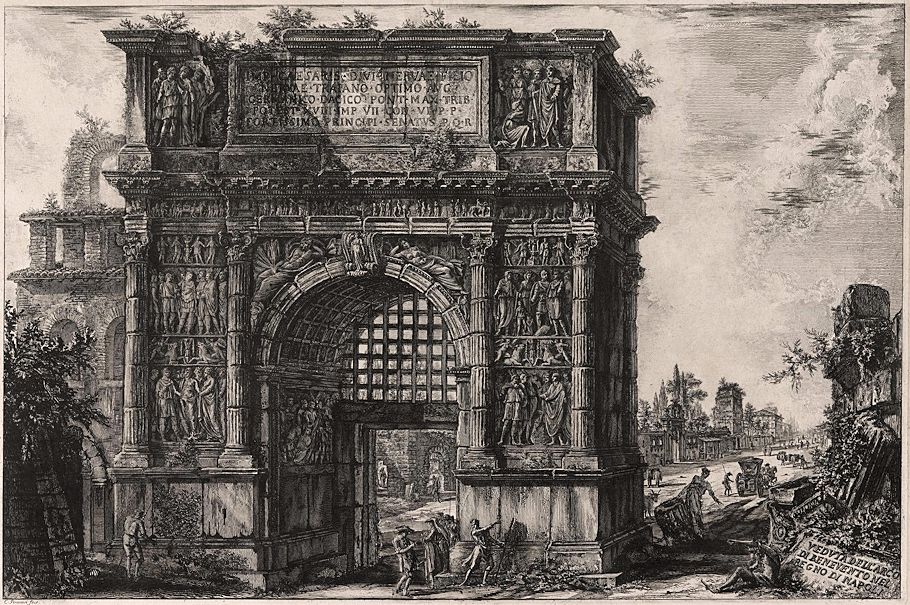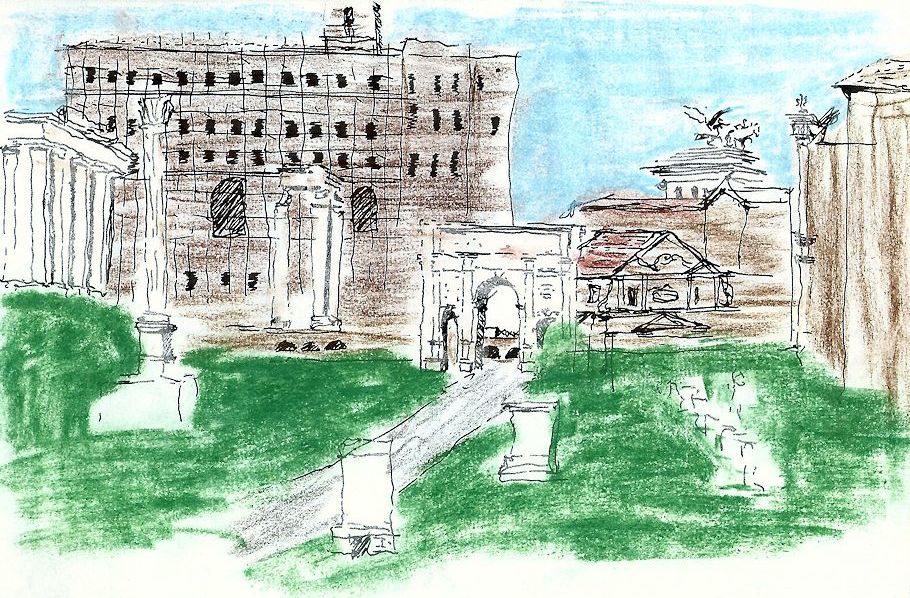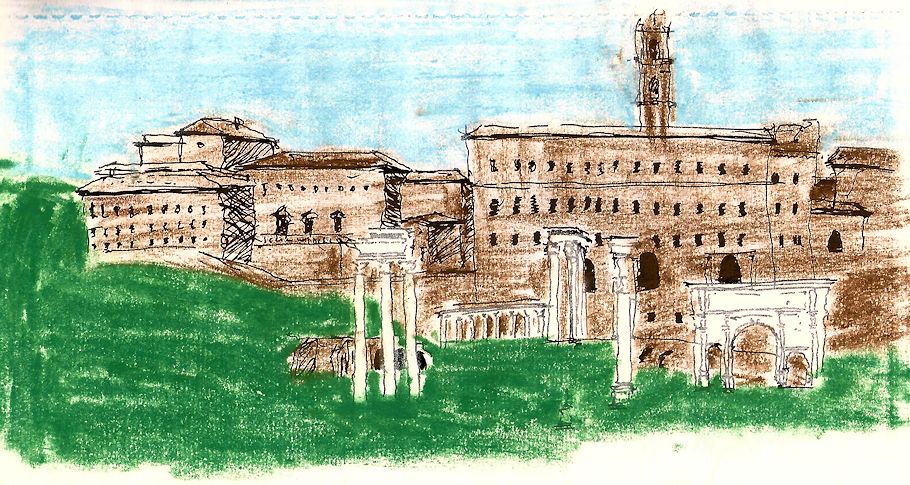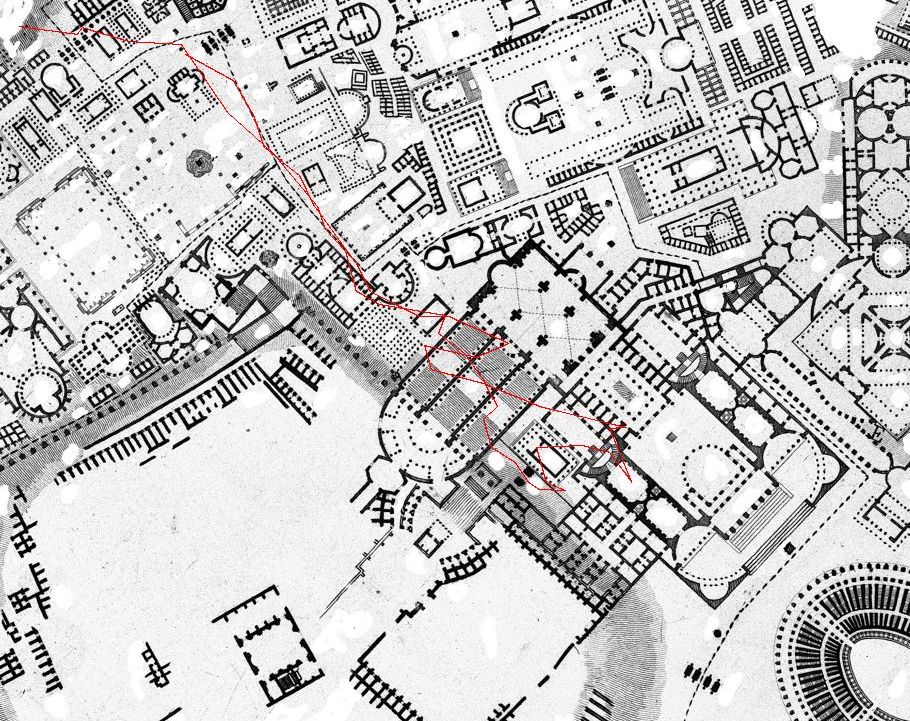3 September 1778
Thursday. Francesco etches the numbers onto the Circus Maximus plan while thinking about how he's eventually going to etch the Palace of the Caesars plan onto the same copper plate. And Piranesi finally gets around to finishing his work on the Naples' arch "view."

3 September 1977
Saturday



3 September 1996
introduction - personal motivation
The major part of my analysis will begin with the triumphal procession route that ends at the main Temple of Mars in the Area Martis. This Temple of Mars being the climax of the procession leads me to believe (correctly?) that the Area Martis is the most sacred precinct of the entire Campo Marzio.
This Temple of Mars also establishes the longest axis of the Campo Marzio. This axis is not obvious primarily because the buildings disposed along it are not entirely positioned in a composition of bilateral symmetry. The lack of absolute symmetry is due to the second longest compositional axis, perpendicular to the longest axis, running through Hadrian's tomb and the Bustum Hadriani.
My whole text could start with a written description (and maybe even a 3-dimensional rendition) of the whole triumphal way. The use of aerial perspectives would be unprecedented (even if they were just of the plan).
...I can speak of my personal motivations in studying the Campo Marzio. The Scully reference of the map hanging over Kahn's desk made me want to seek the same inspiration that Kahn sought. I can mention how my architectural education began in 1975, and how Temple University's Architecture program was rich with Kahn and Giurgola disciples. I personally wanted to learn how to manipulate geometry the way Kahn and Giugola knew how to manipulate it, and I thought learning the Campo Marzio might be a part of the learning process.
Once having learned CAD, I saw the possibility of actually redrawing the Campo Marzio, especially because of the mirror copy and rotate copy drawing commands. Although the redrawing would, nonetheless, require many hours, the final product, a CAD database, would be many times more than just a single tracing of the original plan.
3 September 2001
Cathedral of Tyre 314?
Within sources readily available I am finding what appear to be errors regarding the Cathedral at Tyre, which is described by Eusebius, Ecclesiastical History X iv 44. Below are three excerpts which offer conflicting dates and seem to mistakenly attribute the building of the church at Tyre to Constantine.
1. Krautheimer, Early Christian and Byzantine Architecture states:
"The cathedral of Tyre (Sur) in the Syrian coast, consecrated in 318, represents still another approach. Eusebius's description, although rhetorical, outlines the plan with some clarity, and it certainly reflects the impression a lavish church building was designed to make. ... Tyre, Aquileia, and Orleanville, then, represent variant types of Constantinian cathedrals."
2. The online Catholic Encyclopedia under 'Ecclesiastical Buildings' says the following:
"In his Ecclesiastical History (X, iii, iv) Eusebius describes the dedication, in 314, of the church erected by Constantine at Tyre, at which time, however, there was no special rite for that purpose."
3. And under 'Dedication' the CE states:
"It is not strange, however, that owing to the persecutions of the first three centuries, references to the dedication of churches are extremely rare. The first authentic accounts of this kind are furnished by Eusebius (Hist. Eccl., X, iii, iv; De Vitâ Const., IV, xliii, in P. G., XX), and Sozomen (Hist. Eccl., II, xxvi in P. G., XLVII) in regard to the cathedral of Tyre (314) and Constantine's church at Jerusalem." [Note: only Eusebius' Hist. Eccl. references Tyre, while the Vita Const. and Sozomen's Eccl. Hist. reference the dedication of the church at Jerusalem.]
My questions are:
1. Can anyone verify what the dedication date of the Cathedral of Tyre correctly is?
2. If the dedication date is 314 or 318, then in either case it is not possible to say that the Cathedral of Tyre is a Constantinian building because Constantine did not have control of the Eastern Empire until Autumn 324. Moreover, if the Cathedral of Tyre was dedicated in 314, then it surely predates the completion of the Basilica Constantiniani (now St. John Lateran, Rome), which began no sooner than late autumn 312. Could it be that the basilican church typology was already fairly well established in the East prior to its (the basilican typology's) establishment in Rome? [It appears that a church at Tyre was destroyed under Diocletian, and that the dedication in 314 or 318 was of a rebuilding of the prior church.]
3. What really makes me curious is why the mistake of associating Constantine with an eastern church dated prior to his having power in that region was made in the first place, and within reputable sources, no less. Is this perhaps an example of historians wanting to keep all credit of early 4th century Christian church building completely (and simply) with Constantine?
3 September 2022

Where I probably walked through the Roman Forum 45 years ago.
|